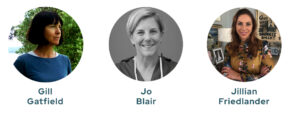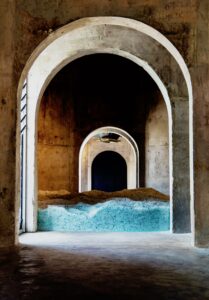Jillian Friedlander bubbles with enthusiasm about the positive changes that can be forged for Aotearoa New Zealand through The Arts. She is the Creative Director for the philanthropic Friedlander Foundation that strives to contribute to our society through equal opportunities. The Foundation supports three causes: Medical Sustainability, Youth Wellbeing and The Arts.
Residing in Auckland, Jillian and Daniel Friedlander have been married for 25+ years. They have twin daughters, Arielle and Maia, born 1 November 2003. So where did this remarkable woman’s life begin?
“I was born in Invercargill then moved to Waikaia (formerly known as Switzers, a gold mining town.) During my formative and teenage years, I grew up in the Catlins, South Otago. I came from salt of the earth country stock!
My late father was a great outdoors adventurer. I had a firearms license for wild deerstalking and pig-hunting. These outings with my dad were where I learnt to listen and learn about the relationship that exists between the geographical environment and the human element. In my heart it was a finely tuned orchestra with the songs of the bellbirds, diffused light on the ferns, and moss on the rainforest floor.
I learnt highland dancing and performed at AMP Shows. I also learnt cooking skills when the sheep shearers came. I attended the monthly meetings of Rural Women New Zealand / Ngā Wāhine Taiwhenua o Aotearoa. It wasn’t all cups of tea, but friendship and compassion too. When I was 15, they sponsored me in the Miss South Otago pageant.
I was selected as an AFS (American Field Student.) This is where my eyes were opened. I found my navigation to be a team member and a leader. I was fortunate to have the fortitude to complete my bronze, silver, and gold awards through the Duke of Edinburgh’s International Award Aotearoa NZ Hillary Award.
I’ve had a lifelong passion for the arts, and deep empathy and protection for women’s equality through my mother, who had me when she was 16. She was the first woman in South Otago to accomplish Outward Bound, Anakiwa, in an era when she was frowned upon for leaving her husband and children to pursue her dream.
My personal journey has been demanding, especially when one of my daughters was born with a brain injury. I recovered from bilateral salpingo-oophorectomy and other invasive surgeries and was fortunate also to recover from genealogical cancer. This has kept me putting one foot in front of the other when faced with challenges.
My true healing began when I embraced the arts through colouring, painting, and listening to and playing music. I am learning to be patient to find my way back to my artistic soul.”
Tell us about your commitment to Friedlander Foundation and The Duke of Edinburgh’s International Award Aotearoa NZ Hillary Award.
“Our founder, Sir Michael Friedlander, KNZM has been involved for 40 years supporting the Award and is a World Fellow. The 60th anniversary of inspiration, adventure, accomplishment, and friendship will be celebrated in 2023. For seven years I was a trustee on the board governing the Award, the youngest female appointee at the time. Like many women who are part of change, it takes time and forward-thinking to bring equality and diversity to the table. My role within the Friedlander Foundation working with National director, Karen Ross, has been fruitful for the aligned incentives created and actioned by the two parties for youth development goals.”
You have also been involved through the Foundation with the New Zealand Opera and the Royal New Zealand Ballet (RNZB).
“Friedlander Foundation has been a partner and inner circle benefactor for many years to New Zealand’s only full-time professional opera company. In 2021 we created the Friedlander Foundation Associate Artist Award, with the first recipient being Eleanor Bishop, a stage director of opera and theatre. We have also partnered with the opera company to implement The Lullaby Project, bringing the Carnegie Hall Weill Music Institute to Aotearoa in 2021. New teen mums write personal lullabies for their young children with help from a professional artist. This supports maternal health, aids childhood development, and strengthens the bond between parent and child.
After many decades of support to the RNZB, in 2019 the Foundation created an investment in the future of our national ballet company with opportunities for young dancers. We established Scholarships for two dancers in their first year with the company to realise their potential in this most demanding of professions.”
How does the Friedlander Foundation work towards reducing inequality while influencing positive change in New Zealand?
“Friedlander Foundation partners with ABI (Auckland Bioengineering Institute)
Professor Thor Besier, Doctor Angus McMorland, Doctor Julie Choisne and their teams on a movement disorders project.
One in 500 babies in Aotearoa New Zealand are born with asphyxiation and stroke and suffers some degree of brain damage. This is usually grouped under Cerebral Palsy (CP.) The Foundation has given $2.95 million for a five-year project focused on developing tools for early detection and treatment of neurological disorders in infants. This means intervening with tools and strategies that could greatly reduce the burden of the disability. The potential to reduce the associated costs of healthcare and give equality to treat children with neurological disorders will have an enormous impact on the lives affected.
About 10,000 children in New Zealand live with Cerebral Palsy affecting their body’s ability to perform controlled movements such as eating, speaking, breathing, bladder and bowel control. The musculoskeletal systems of children worsen over time. Stroke is now the most common cause of permanent disability for New Zealanders and CP is the most common neurological disorder affecting children. Cross-pollination of connections with researchers to Whānau Āwhiina Plunket (NZ Plunket) has created an ideal partnership.
Art therapy and Music therapy are two great modalities for helping babies, toddlers and children to communicate when they are afraid, or do not have use of their voice. We have experienced the benefits of this both in Aotearoa, New Zealand and overseas in clinical and hospital surroundings, as this helps ease the burden for both parent and child.”
How do you think the arts are currently faring in New Zealand, especially in regard to women’s roles?
“In the last 18 months there has been progress. Throughout covid-19 and post pandemic, examining the audience, the artist, and the relationships between the two, there wasn’t much diversity and fluid conceptualization. Now we’re experiencing social consciousness and enlightenment; the old traditions aren’t holding as strong as they once did. The dialogue has started to allow all to contribute.
The Arts Foundation has proved itself an independent umbrella to the arts, outside the government agencies, academia and industry. There is increased Wāhine understanding and belief in our Māori and Pasifika cultures with our European, Asian, and Indian social groups, though this is not being limited to a ‘tick’ box ethnicity, political or physically identified orientation. This is new, so it can be uncomfortable for some, yet not far thinking enough for others, however, time and measure will come forth, as previous protocols, boundaries, and limits weren’t sustainable to feel and create this imagination of our time.
Friedlander Foundation has honored the voices of artists through two unique opportunities. First, to immerse the artist with the Harriet Friedlander NYC Artist Residency ($100,000.00 for a year or to the value of) to expand their practice, to observe, to create outside the Aotearoa New Zealand narrative and see what comes to them; how will this experience influence their practice, whether it be in film, music, dance, painting, photography, or sculpture?
Secondly, Jillian Friedlander Te Moana Nui-a-Kiwa, 2020 Laureate Award for ($30,000.00 each year for each recipient for the next ten years) acknowledges outstanding Māori and Pasifika creatives within the arts. Friedlander Foundation is not part of the selection committee for the artists chosen.
The arts are the recorders of history while breaking taboos. If you look at theatre, say 25 years ago, and compare it with today, you see the change to multi-cultural productions. We have the right to govern personal choice. And we must remember we need to hold the hands of our men and boys, to share and bring them along together.”
Do you see a role for Global Women in supporting women and the arts?
“I Joined Global Women to meet, interact, listen, be stimulated in thoughts and robust debate, and not be a lone voice. I wasn’t in or from the corporate world, but I learned to be open, and aware of the exchange of different ideas.
The Arts are an important sector for Global Women. To creatively give another view – sometimes while communicating or expressing an idea, non-creatives may think- where is this thread going? But we get there, even though it may be completely out-of-the-box thinking.
We have spent a lot of time on STEM in the past few years. I am non-objective when I say that perhaps we need some time on STEAM especially in times of adversity. I know personally, and in the community, the benefits of the arts on our state of mind, physically and emotionally.
The current generation looks at us and asks why women still aren’t equal in gender, pay, or anything else where there is division. Should this be the question? Is there another view? Have we been asking the racehorse to ride the jockey for too long in this paradigm? Post- Covid in a new era, what will be assigned to history? What is the reset? How do we balance fulfillment in our personal and family lives with community, business and our environment?
Global Women New Zealand needs to korero! Sometimes we must listen to the music, the dance of a tune like that of the fantail that follows within the bush.
Don’t let’s get too insular, or it will bite us on the ass!!”


